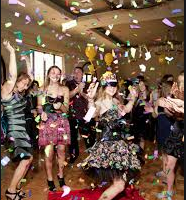The Unique Experiences of Women In The Holocaust
Nazi attempts to annihilate all Jews involved specific measures against men and against women, and triggered different gender responses. The authors and editors of these two volumes acknowledge that many survivors and Holocaust scholars have serious objections to including gender factors in their research, for fear of trivializing the enormity of the Holocaust. These authors disagree; for them, the focus on gender differences adds specificity and depth to our understanding of what happened to ordinary people during the Holocaust.
In Resilience and Courage: Women, Men, and the Holocaust (Yale University Press, $35), recently honored with a National Jewish Book Award, Nehama Tec, a multilingual survivor and author off our previous books on the Holocaust, conveys the particulars of daily living as they were experienced and remembered by survivors. Tec is careful to recognize the possible distortions in memories of trauma and to guard against the biases and assumptions of both interviewer and interviewee. She draws the reader into the lives of men and women who lived through these horrors and were able to speak of them. They report that Jewish men were likely to respond to their early public humiliations with major depression and resulting apathy, while their wives took over in fighting for the family’s survival. In the ghettoes, mothers were remembered as frequently giving bigger portions of their meager food to fathers and children while depriving themselves. Outside the ghetto, women could ‘pass’ more easily, risking their lives to carry ammunition and messages. In concentration camps and labor camps, all Jews suffered starvation, arbitrary cruelties, and dehumanizing workloads. In addition women were exposed to rapes, forced abortions, and the wrenching killings of their children. Resistance took many forms for both women and men from small individual acts of punishable kindness or self-preservation to organized efforts. Previous books noted the strong nurturing bonds among women in the camps. Tee finds that men’s bonding experiences differed but could have been just as life affirming or even lifesaving, yet men were less likely to assign importance to them when they recounted their experiences.
In Experience and Expression: Women, the Nazis, and the Holocaust, (Wayne State University Press, $24.95), Elizabeth R. Baer and Myrna Goldenberg have collected 13 essays about women, Jewish and non-Jewish, victims and perpetrators. These pieces include facts and figures that can be even more devastating than the qualitative reports of survivors. Here, the focus is on Nazi efforts to prevent non-Aryan women, including Jewish women, from having children. We read about Russian and Polish forced female farm laborers in Germany, their involuntary abortions, the systematic starving and poisoning of babies and young children, and the knowing participation of German farmers and villagers. Two chapters report on the German nurses whose moral and religious struggles rarely stopped them from performing what they considered acts of compassion in making the doomed children’s deaths less painful. Other chapters deal with the importance of memoirs, the specifically female contributions of resisters, including the selective use of flirtatiousness or helpless appearance when necessary. What sets this book apart are the sophisticated discussions of feminist theories, their applications to the Shoah and to its depictions in literature and the arts.
It is impossible to do justice to these two books in so brief a review. Their combined impact will deeply change readers’ understanding of the Holocaust.
Rachel Josefowitz Siegel, a writer and semi-retired feminist therapist, was able to find refuge in Switzerland, then in the U.S., at the beginning of the Nazi regime. She has co-edited three books on Jewish women.


